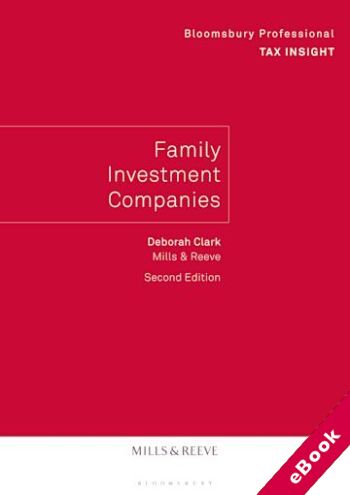
The device(s) you use to access the eBook content must be authorized with an Adobe ID before you download the product otherwise it will fail to register correctly.
For further information see https://www.wildy.com/ebook-formats
Once the order is confirmed an automated e-mail will be sent to you to allow you to download the eBook.
All eBooks are supplied firm sale and cannot be returned. If you believe there is a fault with your eBook then contact us on ebooks@wildy.com and we will help in resolving the issue. This does not affect your statutory rights.
Covers the key issues to consider when exploring if a Family Investment Company is an appropriate vehicle to help with an individuals estate planning.
An updated version of the Tax Insight on Family Investment Companies published in 2019. Written by an acknowledged expert in this field, Deborah Clark of Mills and Reeve, this publication explores what makes a company a FIC, considers how a company works and the potential ways to make them more bespoke.
A Family Investment Company (FIC) is a bespoke vehicle which can be used as an alternative to a family trust. It is a private company whose shareholders are family members. A FIC enables parents to retain control over assets whilst accumulating wealth in a tax efficient manner and facilitating future succession planning. The commentary covers issues on how to fund the structure, what tax issues to watch out for, what rights you might give to the shares and the pros and cons of different choices. It deals with directors' powers, the use of an unlimited company and issues around privacy and wealth protection. Different structures are explained and their benefits and disadvantages highlighted.
The commentary is bought up to to date with the new corporation tax rate and dividend tax rates introduced since the previous edition was published. It also reflects the author's continued practical experience in dealing with clients in this area.
New features include:
The guidance given is supplemented by examples and diagrams to helpfully illustrate the concepts described.